I am attempting to create "code first from database" classes using Entity Framework 6.1.3 but it seems E.F. is having trouble making associations (or I am simply not setting something up correctly in my database).
Here are the two tables in question, I am making classes from using entity framework;
In my database CVE has a one-to-many relationship with AssessmentChecks. Thus the AssessmentChecks table has a foreign key in it as such;
ALTER TABLE NVD.[AssessmentChecks] ADD CONSTRAINT
FK_AssessmentChecks_CVE FOREIGN KEY
(
CveIDFK
) REFERENCES NVD.CVE
(
CveID
) ON UPDATE NO ACTION
ON DELETE NO ACTION
However, when I create classes from this database, Entity Framework is marking "CveIDFK" as a required field...
public partial class AssessmentCheck
{
public int AssessmentCheckID { get; set; }
[Required]
[StringLength(20)]
public string CveIDFK { get; set; }
public string AssessmentCheckSystem { get; set; }
public string AssessmentCheckURL { get; set; }
[StringLength(200)]
public string AssessmentCheckName { get; set; }
public virtual CVE CVE { get; set; }
}
If I use that same database to instead create an EDMX file (EF designer, instead of "Code First"), here is what that model diagram and AssessmentCheck class look like (which is more of what I was expecting);
public partial class AssessmentCheck
{
public int AssessmentCheckID { get; set; }
public string CveID { get; set; }
public string AssessmentCheckSystem { get; set; }
public string AssessmentCheckURL { get; set; }
public string AssessmentCheckName { get; set; }
public virtual CVE CVE { get; set; }
}
What gives? How can I make Entity Framework create the association in the code first model, so that "CveIDFK" is not "Required"?
To be clear, my end goal is to create classes from the database, create a "CVE" object, add an "AssessmentCheck" to the "CVE" object, and then "SaveChanges". The problem is when I do this, and try to Save Changes, EF is saying I need to explicitly provide the "CveIDFK" field of the "AssessmentCheck" object. I believe this FK should be automatically implied given the relationship between CVE and AssessmentChecks. Am I missing something?
EDIT:
I updated the database to go back to using CveID" as the name of the foreign key in the AssessmentChecks table, and recreated my classes.
Here is the code I am using to try to save the data;
CVE cve = new CVE
{
CveID = "CVE-2016-2140"
};
AssessmentCheck AC1 = new AssessmentCheck
{
AssessmentCheckName = "First Assessment check"
};
AssessmentCheck AC2 = new AssessmentCheck
{
AssessmentCheckName = "Second Assessment Check"
};
cve.AssessmentChecks.Add(AC1);
cve.AssessmentChecks.Add(AC2);
using (var context = new NVDModel())
{
try
{
context.Database.Log = Console.WriteLine;
context.CVEs.Add(cve);
context.SaveChanges();
}
}
And the error I get is
Entity of type "AssessmentCheck" in state "Added" has the following validation e rrors: - Property: "CveID", Error: "The CveID field is required." Entity of type "AssessmentCheck" in state "Added" has the following validation e rrors: - Property: "CveID", Error: "The CveID field is required."
If I remove the "required" data annotation from the "CveID" field of the "AssessmentChecks" class, it works (the foreign key is automatically inserted without me explicitly providing it), but I wouldnt think I have to remove this data annotation.
Also, if I move the addition of the children after I add the parent to the context, that also works;
try
{
context.Database.Log = Console.WriteLine;
context.CVEs.Add(cve);
cve.AssessmentChecks.Add(AC1);
cve.AssessmentChecks.Add(AC2);
context.SaveChanges();
}
What is going on here?

